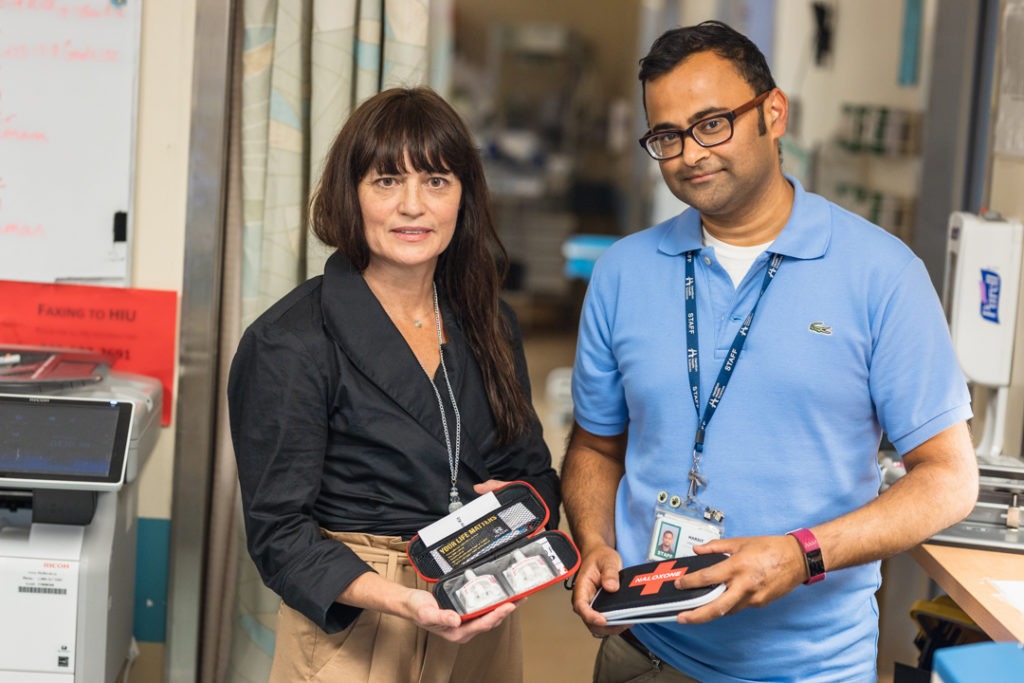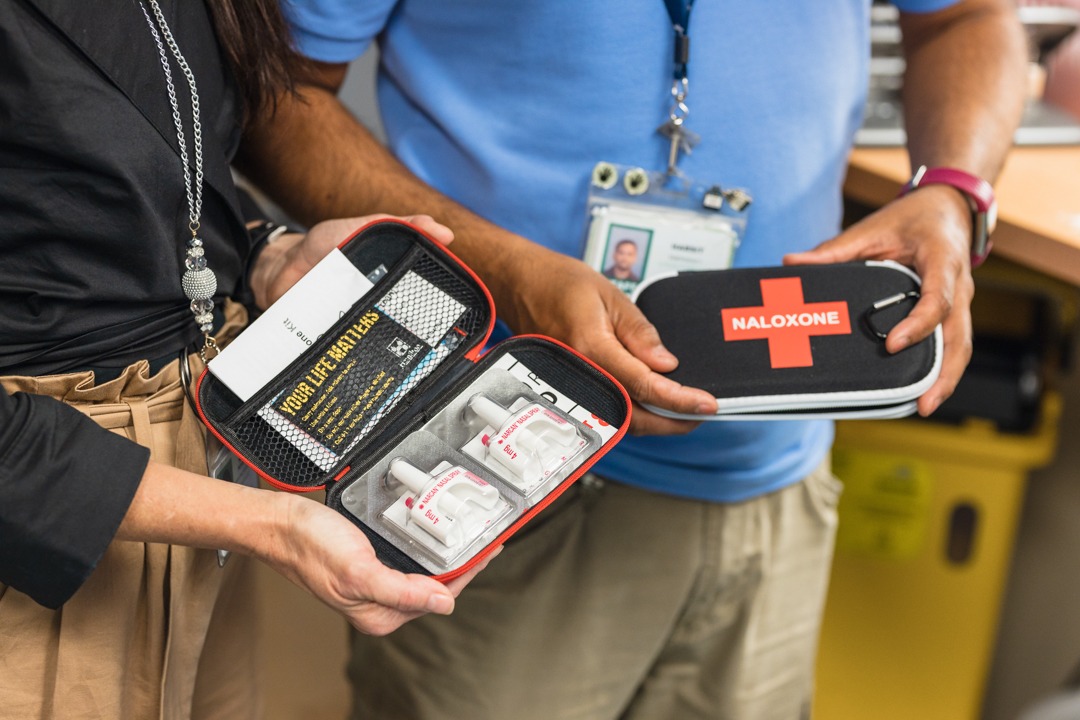
HHS team spurs policy change for Naloxone kit funding
A team at Hamilton Health Sciences (HHS) has changed the way the province funds life-saving Naloxone kits.
As they watched a disturbing increase in overdose-related visits, clinical pharmacist, Harsit Patel and his colleagues in the emergency department at Hamilton General Hospital (HGH) knew they had to act. While in hospital, patients were asking for Naloxone (Narcan®) kits—portable pouches containing an opioid antidote that can be injected to revive someone who is overdosing.
“Patients ask for it by name, but we weren’t able to provide it,” says Harsit. “We were able to tell them they could go to their pharmacy, they could go to public health, but there were some restrictions around that. Those places aren’t open all the time. The best time to give them something is right when it happens, before they leave.”
“At Hamilton General Hospital alone we were going through five or six kits a week almost immediately”
Naloxone kits include enough medicine to reverse opioid overdose for 10-15 minutes, allowing patients time to access emergency services. The HGH team felt that by providing kits to users at highest risk—those who are already coming into the emergency department as a result of an overdose—they could save lives.
But the money wasn’t there.
Naloxone kits weren’t funded for hospitals
The provincial funding model for Naloxone kits did not include any money for hospitals to distribute kits to patients. Harsit raised an idea through HHS’ Continuous Quality Improvement management system, which enables frontline staff to make positive changes on their units. He proposed the team find a way to fund the kits internally and develop education materials so they could be given to patients being treated for opioid overdose.
His idea took off.
The team found internal funding for the kits and developed custom education materials for Hamilton residents that include contact information for local addiction services. They began handing out the kits at HGH, and soon expanded to other HHS sites, and to St. Joseph’s Healthcare Hamilton.
“At Hamilton General Hospital alone we were going through five or six kits a week almost immediately,” says Harsit.
Changing provincial policy
As their initiative took off, people began to understand the value of providing kits to people right as they leave the hospital for an overdose. Dr. Bill Krizmanich, an emergency department doctor at HHS who was chief of emergency medicine when this initiative took off, advocated to the Ministry of Health and Long Term Care to adapt its funding model so emergency departments can distribute funded Naloxone kits.
They listened.
For the next year, the HHS team worked with the province to develop a funding model where money for the kits is distributed to the hospital through Hamilton Public Health. The process was so effective, it spurred provincial policy change, and now other municipalities are creating their own processes modeled on this example.
“We’ve developed a very seamless model with Hamilton Public Health, and are now able to provide these kits indefinitely,” says Nancy Nesathurai, a drug information pharmacist at HHS. “Opioid addiction is such a serious problem in our city and our country, and these kits can give people a second chance at life.”
HHS is now also distributing Naloxone kits that contain nasal spray instead of a needle. Nancy and Harsit expect uptake will be even higher with this new option available.

By the numbers
Each Naloxone kits costs $35.
In the last year, Hamilton Health Sciences has distributed more than 110 Naloxone kits, 76 per cent of those were given out at HGH.
In 2016, Hamilton General Hospital’s emergency department had 129 overdose visits. In the first half of 2019 alone, there have been 279.
In the last 4 years, 35 per cent of HGH emergency department patients with opioid overdose have had multiple visits for overdose.
What’s in Naloxone kits?
When someone overdoses, their breathing slows down or stops completely. Signs of an overdose include not being able to stay awake, walk, talk, or breathe. The person may have a limp body, make gurgling sounds, have pale or blue skin, tiny pupils, or be vomiting. If you suspect someone has overdosed, call 911 immediately.
The take-home Naloxone kits include enough medicine to reverse opioid overdose for 10-15 minutes, allowing patients enough time to access emergency services. There are two types of kits: an injectable naloxone kit and a nasal spray naloxone kit and each come with their own supplies. Each kit also contains education material and contact information that could help prevent future overdoses.
We know many patients do not intentionally overdose and may be unaware their supply of drug contains opioids.
Where else can you get Naloxone kits in Hamilton?
The Ontario government website has an interactive map to show where you can find free Naloxone kits in the community and get training on how to use them. Some pharmacies, community-based organizations, and correctional facilities carry Naloxone kits.
